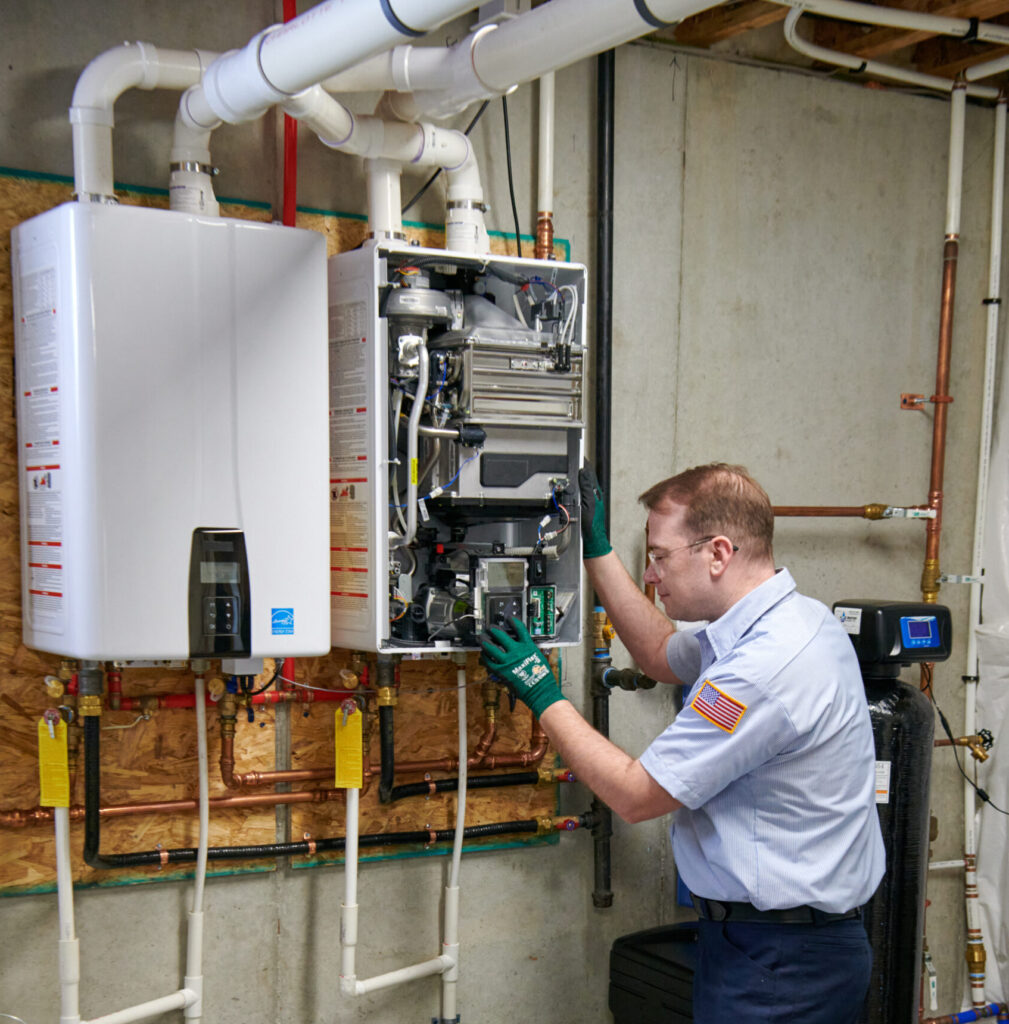
Most homeowners don’t think about their water heater until it breaks down. But long before that happens, the system could be quietly costing you money every single month. Even when it seems to be running fine, a water heater can lose efficiency in subtle ways — through heat loss, sediment buildup, or worn-out components — that gradually inflate your energy bills. These inefficiencies build up over years, draining hundreds of dollars that could have easily been saved with basic maintenance or timely replacement.
At Discount Water Heater, we’ve seen this pattern play out over and over again. A water heater doesn’t need to fail to be expensive — it just needs to be ignored. Understanding where these hidden costs come from is the first step to fixing them.
The five issues below are the most common reasons homeowners end up paying more than they should.
1. Sediment Buildup
Every gallon of water that enters your tank carries minerals like calcium and magnesium. Over time, those minerals settle at the bottom, hardening into a dense layer of sediment that insulates the water from the heating element or burner. This means your system has to run longer to heat the same amount of water, consuming more energy in the process. The extra strain also shortens the life of the tank by trapping heat against the steel and weakening its interior lining. You’ll usually hear the first signs of trouble: rumbling, popping, or knocking sounds as water bubbles through the hardened scale.
The fix is simple — drain and flush the tank once a year to remove sediment before it hardens. If your heater is older or the noises persist, that’s often a sign that the buildup is too advanced and replacement may be the more cost-effective choice. A new, high-efficiency unit can pay for itself in lower utility bills within a few years.
2. Heat Loss From Poor Insulation
A standard water heater keeps a full tank of water hot around the clock, even while you sleep or leave for work. Every hour, a small amount of that heat escapes through the tank walls and uninsulated pipes, forcing the system to reheat the same water again and again. That’s energy you’re literally paying to lose.
If your tank feels warm to the touch, heat is escaping. Wrapping it in an insulation blanket and insulating the first few feet of hot-water pipe can reduce standby heat loss dramatically. For homes with older systems, upgrading to a tankless model is an even better solution. Tankless systems heat water only when it’s needed, eliminating standby losses entirely while providing endless hot water on demand.
3. Corrosion and a Worn Anode Rod
Inside your tank is a small but crucial component called an anode rod. Its job is to attract corrosive minerals so they don’t attack the steel walls of the tank. Over several years, the rod dissolves completely — and once it’s gone, your tank becomes the target. Rust weakens the steel, contaminates the water, and makes the heater less efficient.
If you’ve noticed a metallic taste in your water, rusty discoloration, or a sulfur-like smell, the anode rod may already be depleted. Replacing it every three to five years is inexpensive and can add years to your water heater’s life. Neglecting it, on the other hand, guarantees early corrosion and higher heating costs as the system struggles to maintain performance.
4. Faulty Thermostat or Heating Elements
When a water heater’s thermostat or heating elements start to fail, the system often runs longer than necessary, overshoots temperature targets, or cycles on and off inconsistently. Each of those problems wastes electricity or gas while also wearing down internal parts. You might notice the water temperature fluctuating or taking longer to recover between uses.
Testing these components is straightforward for a professional and often costs much less than homeowners expect. A simple part replacement can restore efficiency and stabilize performance. The key is catching it early, before those extra heating cycles start to drive up your monthly bill.
5. Slow Leaks and Valve Issues
Not every leak creates a puddle on the floor. Many start as slow drips from fittings, valves, or internal seals that release hot water a few drops at a time. That might not sound like much, but over the course of a month, those small leaks can waste hundreds of gallons. The bigger problem is that your heater has to replace that lost water and reheat it continually, creating a hidden energy drain that never stops.
Inspect around the base of your tank and nearby plumbing connections for moisture or rust stains. A leaking temperature and pressure valve is an especially common culprit. If you see any sign of water on or around the unit, call a technician. A repair may be possible, but if the tank itself is leaking, replacement is the only safe long-term fix.
The Bottom Line
A water heater doesn’t have to fail to become expensive — inefficiency does the job quietly. Sediment buildup, heat loss, corrosion, worn parts, and minor leaks all add up to a system that costs more to run every year. The good news is that every one of these problems can be prevented or corrected with maintenance and timely upgrades.
At Discount Water Heater, our technicians specialize in identifying where efficiency is being lost and helping homeowners choose the smartest path forward. Whether it’s a professional flush, a simple repair, or a new energy-efficient model, we make sure your system works at its best — and that you’re not wasting money heating water you never use.
Visit DiscountWaterHeater to schedule an inspection or estimate today, and see exactly how much you can save by fixing the problems you can’t see.
